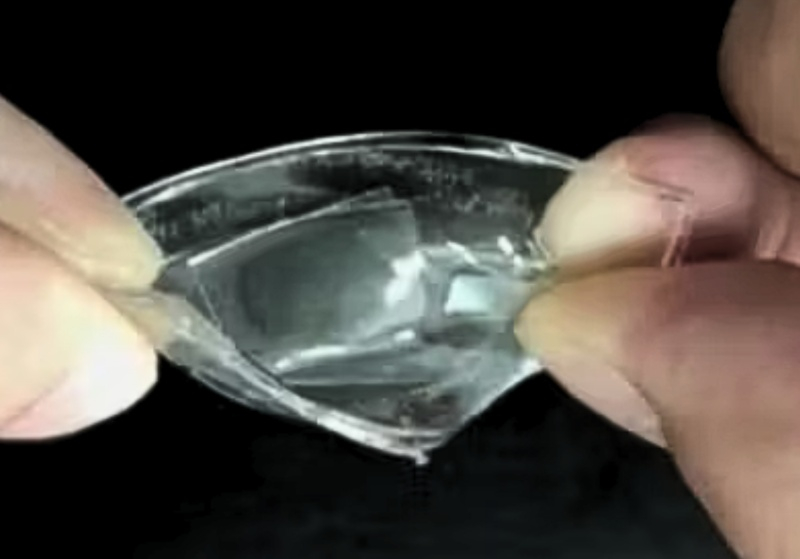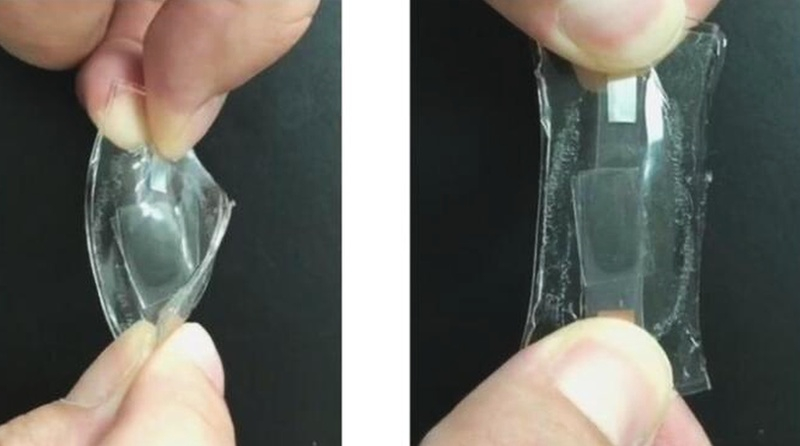To date, the development of soft robots and flexible wearable devices has been hampered by one key component: the battery. Writing in ACS Energy Letters, researchers in China claim to have developed a flexible lithium-ion battery that can stretch up to 5,000% (51 times!) of its original length while maintaining the ability to hold a full charge after 67 cycles.

Image source: Wang Et Al, ACS Energy Letters
Materials scientists from Nanjing University of Posts and Telecommunications say their battery is based on contact lens technologies and materials. To create the battery, they used a thin film of conductive paste that included carbon black, silver nanoconductors, and lithium-based cathode and anode materials. On the outside, the film is protected by layers of polydimethylsiloxane, a transparent flexible material that retains its shape, providing plasticity.
The researchers claim that the flexible battery they developed has 600% more capacity than a comparable wet battery. They say that in several prototypes they were able to achieve relatively stable capacity over 1,000 charge cycles, with a 1% degradation after the first 30 cycles. A comparable battery with liquid electrolyte showed 16% degradation after the same number of cycles. At the same time, the elastic battery could be bent, twisted or stretched without violating the integrity of the material.

The elastic polydimethylsiloxane that makes up most of the battery is completely transparent, offering ample scope for use in smartwatches, clothing and discreet medical wearables. Further development of this technology will allow the use of elastic batteries in folding, roll-up and stretchable displays.